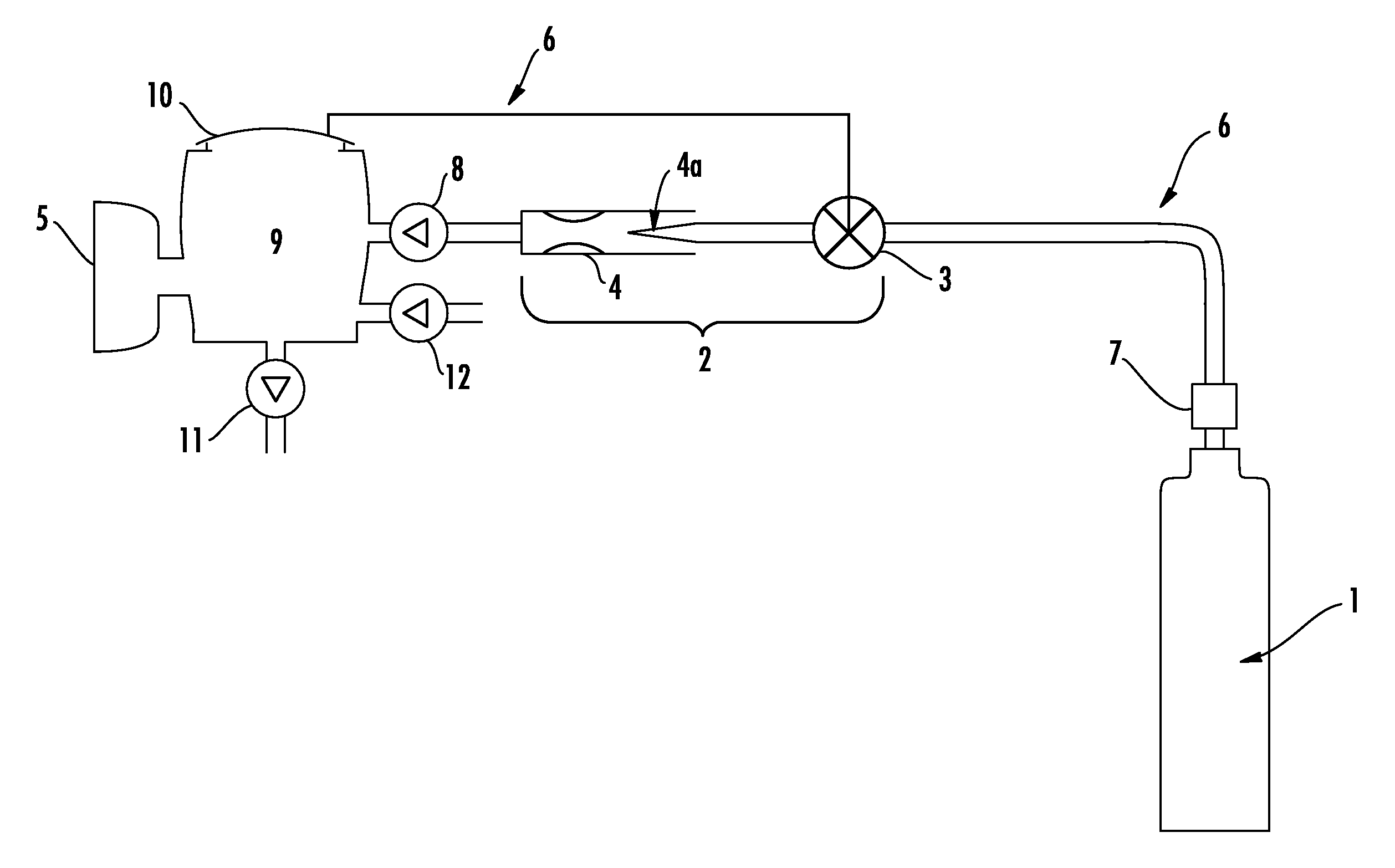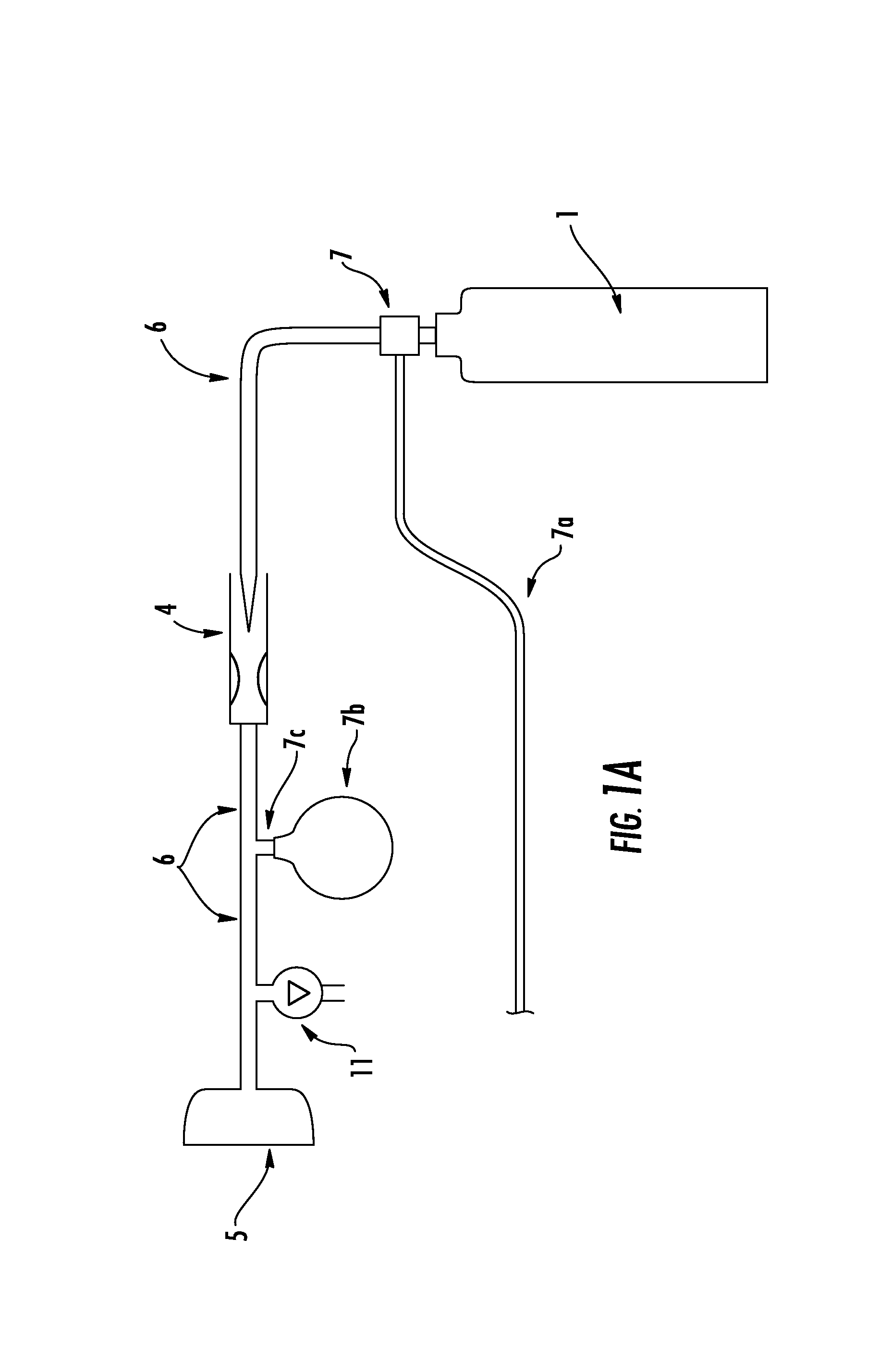Hyperoxic breathing system
a breathing system and hypereroxic technology, applied in the field of hypereroxic breathing system, can solve the problems of increasing the rate of caloric (energy) expenditure of the exercising individual, affecting the health of the individual, and limiting the performance of the endurance exerciser, so as to achieve the effect of increasing caloric expenditure and reducing pressur
- Summary
- Abstract
- Description
- Claims
- Application Information
AI Technical Summary
Benefits of technology
Problems solved by technology
Method used
Image
Examples
Embodiment Construction
[0027]Under most conditions, ambient air is about 20–21 volume percent oxygen and approximately 78 volume percent nitrogen. For purposes of the present invention, hyperoxic air is any oxygen / nitrogen mixture with greater than 21 volume percent oxygen and less than about 78 volume percent nitrogen. Typically, hyperoxic air mixtures useful in the present invention include gaseous mixtures containing 22 to 90 volume percent oxygen, more typically from 25 to 70 volume percent oxygen, and most typically about 60 volume percent oxygen.
[0028]Oxygen sources useful in the hyperoxic breathing systems of the present invention include, for example, compressed oxygen containers (such as gas cylinders) and oxygen generation apparatus such as chemical oxygen generators (for example, potassium chlorate or sodium chlorate canisters) and water electrolysis devices. Typically, the oxygen source is provided by high pressure oxygen cylinders (compressed gas). Air sources useful in the hyperoxic breathin...
PUM
 Login to View More
Login to View More Abstract
Description
Claims
Application Information
 Login to View More
Login to View More - R&D
- Intellectual Property
- Life Sciences
- Materials
- Tech Scout
- Unparalleled Data Quality
- Higher Quality Content
- 60% Fewer Hallucinations
Browse by: Latest US Patents, China's latest patents, Technical Efficacy Thesaurus, Application Domain, Technology Topic, Popular Technical Reports.
© 2025 PatSnap. All rights reserved.Legal|Privacy policy|Modern Slavery Act Transparency Statement|Sitemap|About US| Contact US: help@patsnap.com



